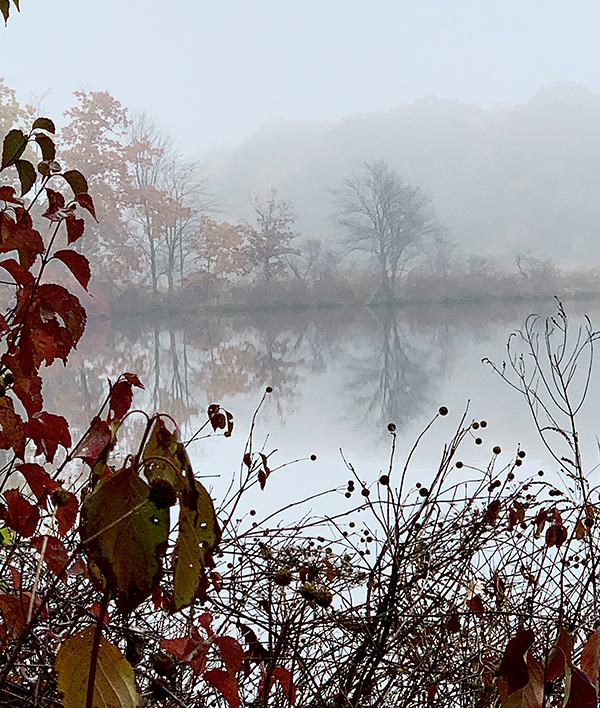Yesterday I went for a walk at the Great Meadows National Wildlife Refuge in Concord, MA. It was very damp and foggy and the ground was covered with wet fall leaves; so I had to tread very carefully. Finally, I came to a clearing along the river and took Figure 1 in an attempt to capture the fog. I have always had trouble photographing fog. Partially, I think this is because that while the idea in some cases is to capture an image of the fog as subject, more often, as here, it is to capture the effect of fog on the landscape.
Fog is not loss of light; it is loss of resolution and dynamic range. It is noise. It is a flattening. Most significantly in working up the photograph the goal is not to defeat the fog but to embrace it. There are Fourier Transform methods enough that can extract the scene from the fog, but that is not the point.
Here it took me quite a while to realize that the image needed brightening, not moody darkening. Curiously, I see in Figure 1 not a full depth of visual range, but four distinct planes as if they were cardboard sheets. The first is the foreground, clear and distinct, the leaves and the berries. Then, second plane, the orange trees on the left. Third are the grey silhouetted trees. And finally is the distant hills and the sky. Interesting! What might in a sharp photograph be a continuum of distance is flattened by the fog to these four distinct planes.


For me, the fog has always had a mysterious beauty.